Do you know what the lights on your car dashboard mean?
These warning lights are there to help you take good care of your vehicle and prevent unexpected breakdowns.
If you've noticed an illuminated light on your dashboard, you can book a diagnostic check to quickly identify and resolve any issues.
Taking action now can prevent the need for costly repairs and give you peace of mind on the road.
Page Contents
- What Do Car Dashboard Symbols Mean?
- What Are the Three Main Warning Lights?
- Car Dashboard Warning Lights
- Fog Lights
- Brake System Light
- Engine Management Light
- Airbag Light
- Power Steering Light
- Diesel Particulate Filter Light
- Low Tyre Pressure Light
- Exhaust Particulate Filter (EPF) Light
- Engine Temperature Light
- Coolant Level Light
- Brake Pad Light
- Electronic Stability Programme (ESP) Light
- Glow Plug Light
- Anti-lock Brake System (ABS) Light
- Oil Pressure Light
- Battery Light
- How Do I Reset Dashboard Warning Lights?
What Do Car Dashboard Symbols Mean?
The symbols on your car dashboard are there to convey important messages about your car’s systems, indicating that there could be a problem you need to address.
You may be able to avoid a breakdown if you have the relevant issue fixed promptly.
What Are the Three Main Warning Lights?
There are three main types of car dashboard warning lights.
Green - If a warning light is green, this means that everything is working as it should. This can also mean that the system is in use.
Yellow - A yellow warning light can indicate that something isn’t working properly, and you should have this checked out.
Red - If the warning light is red, you need to stop driving as there could be something seriously wrong.
Pull over at the next safe place to stop, and call for assistance.
Car Dashboard Warning Lights
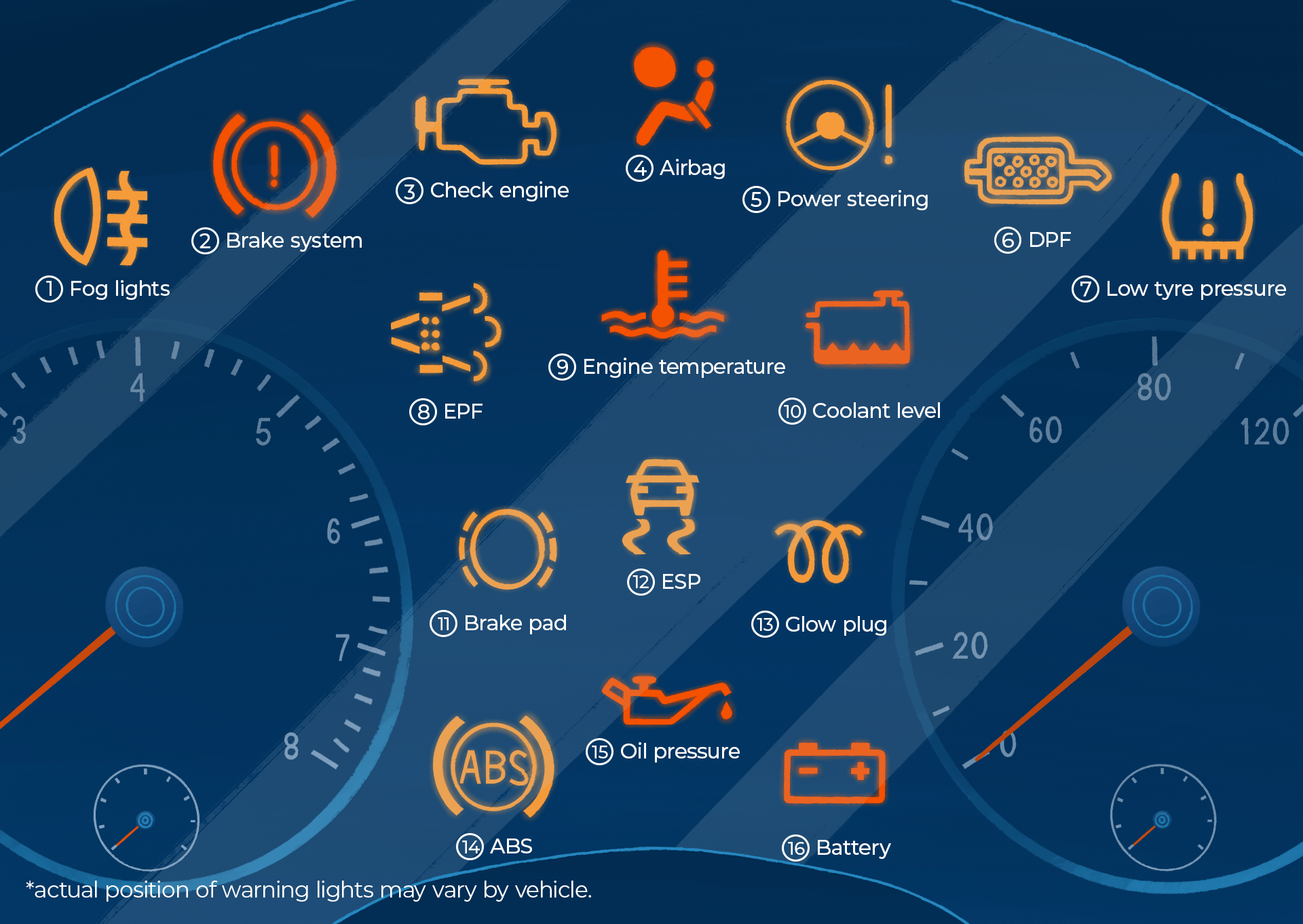
Fog Lights

Your vehicle will have two fog warning lights – one for the front and one for the rear fog lights, both facing in opposite directions.
The fog warning light is an oval shape accompanied by three diagonal lines with a wavy line through them.
Usually, there will be an amber indicator for rear fog lights and a green indicator for front fog lights in your car.
Brake System Light
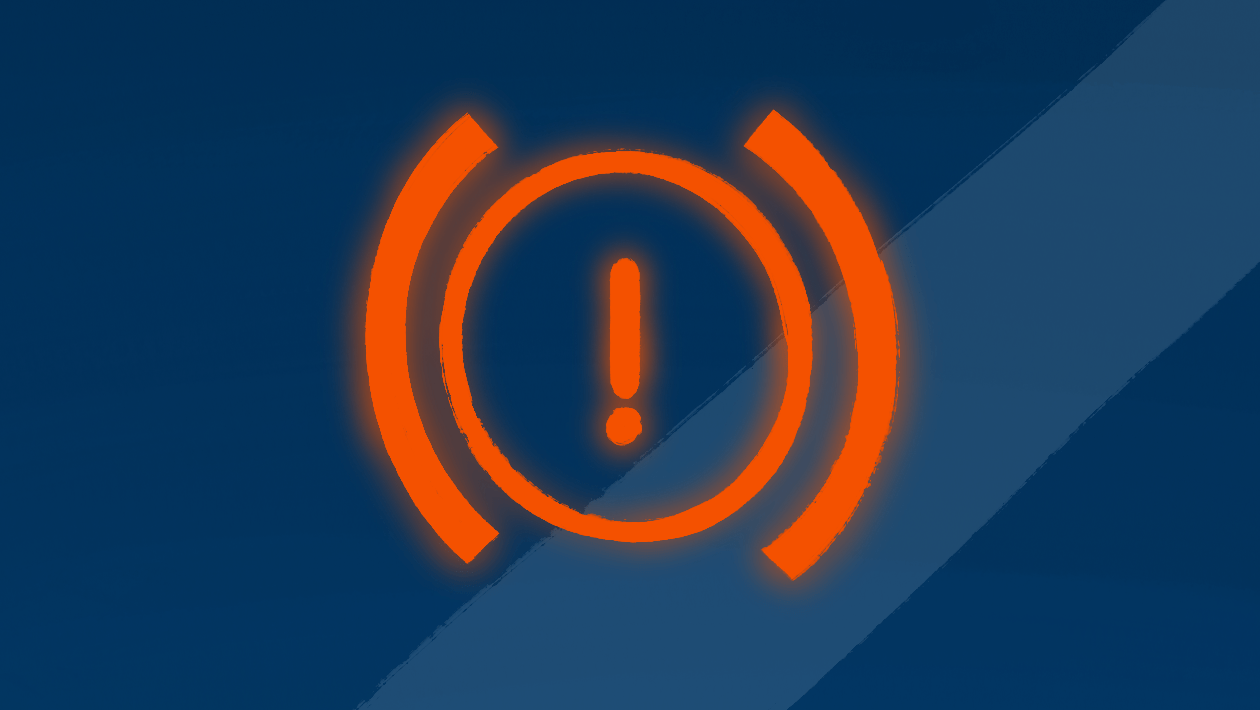
If you notice a brake system light whilst driving, chances are you’ve left your handbrake on.
The brake system warning light looks like a circle with an exclamation mark in the middle, surrounded by two brackets.
Alternatively, if the handbrake is off but the light is on, you could be low on brake fluid or have a hydraulic brake system problem.
You should have your brakes checked by a professional garage soon.
If you notice the brakes feel spongy or the pedal touches the floor whilst driving, you should pull over and call a breakdown recovery service.
Engine Management Light
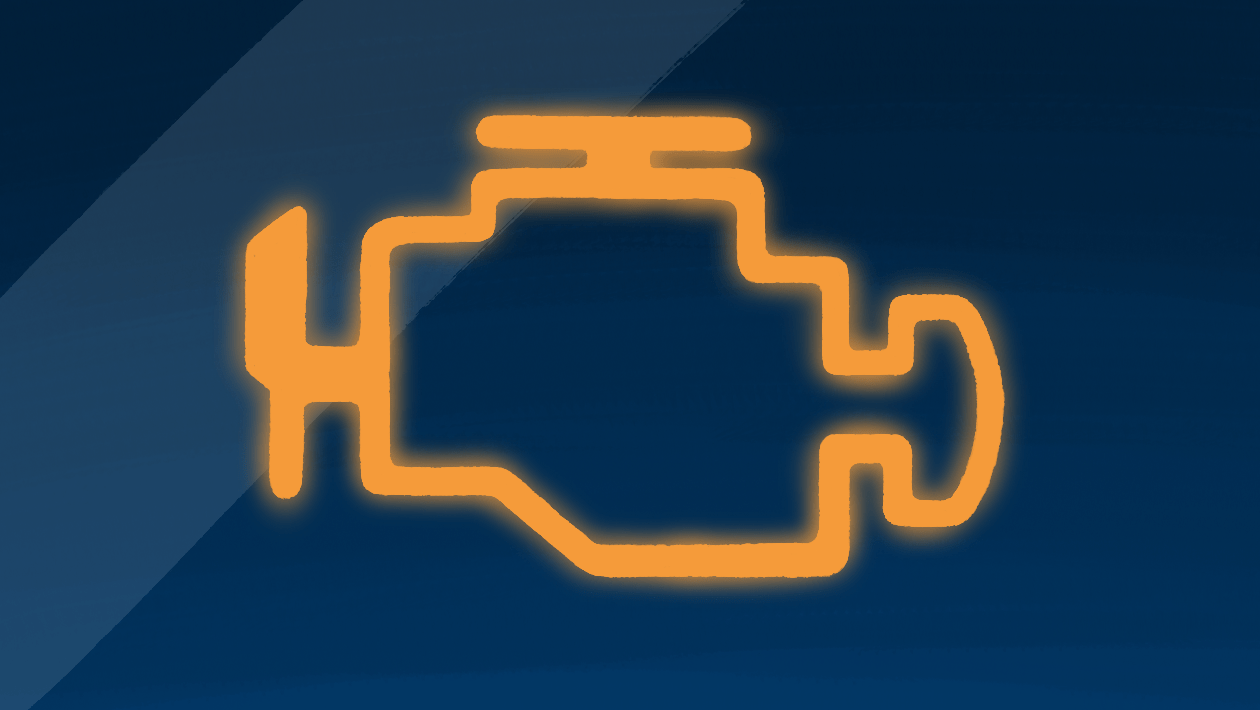
The engine management light – also known as the check engine or ECU warning light – can signal that there is a problem with the engine.
The issue could be a loss of power when you accelerate, with any number of faults being to blame – from broken electrical sensors to emission control system failure.
The EML looks like a stylised engine block.
This light will usually glow yellow or amber, but can show as red if there is a serious issue - and an illuminated EML can pose problems during the MOT test...
Airbag Light

The airbag warning light will shine red if there is a fault with one or more of your car’s airbags.
The issue could stem from faulty sensors,wiring, or even a drained battery.
You should have this looked at by a professional mechanic right away, or else the airbag may not activate when you need it most.
It could even activate unexpectedly and cause injury if you don’t have the issue resolved.
A garage will be able to run a diagnostic test and find the source of the problem for you.
If you notice this light whilst out driving, we would recommend that you pull over when it is safe to do so and call a garage or breakdown service to help you.
The airbag warning light looks like a person strapped in by a seat belt, facing a circular airbag.
Power Steering Light

The power steering warning light – sometimes known as EPS or EPAS – will light up if there is a power steering problem.
It resembles a steering wheel with an exclamation mark next to it.
If your car uses an electric powered system, you may simply need to stop in a safe place and try the car off and on again after 30 seconds or so.
You should have your car checked out if the light stays on even after you do this.
Though you can still technically drive with the EPS light on, this could be dangerous so you should not drive until the issue is fixed.
Diesel Particulate Filter Light
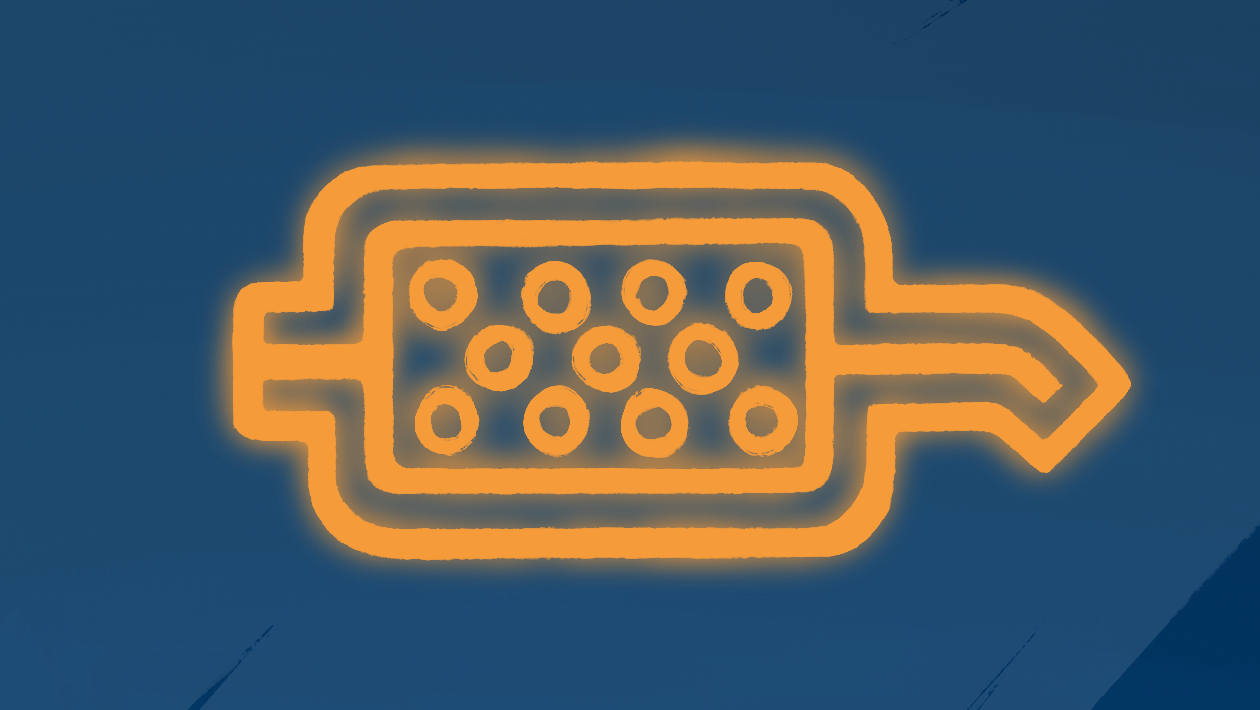
The diesel particulate filter (DPF) light will come on if there is a problem with the exhaust particulate filter.
When the DPF becomes blocked, an orange warning light will appear on your dashboard.
The light usually looks like a little box with holes in it.
You should go to a garage soon if your DPF has become blocked as this could cause damage to your vehicle.
Low Tyre Pressure Light
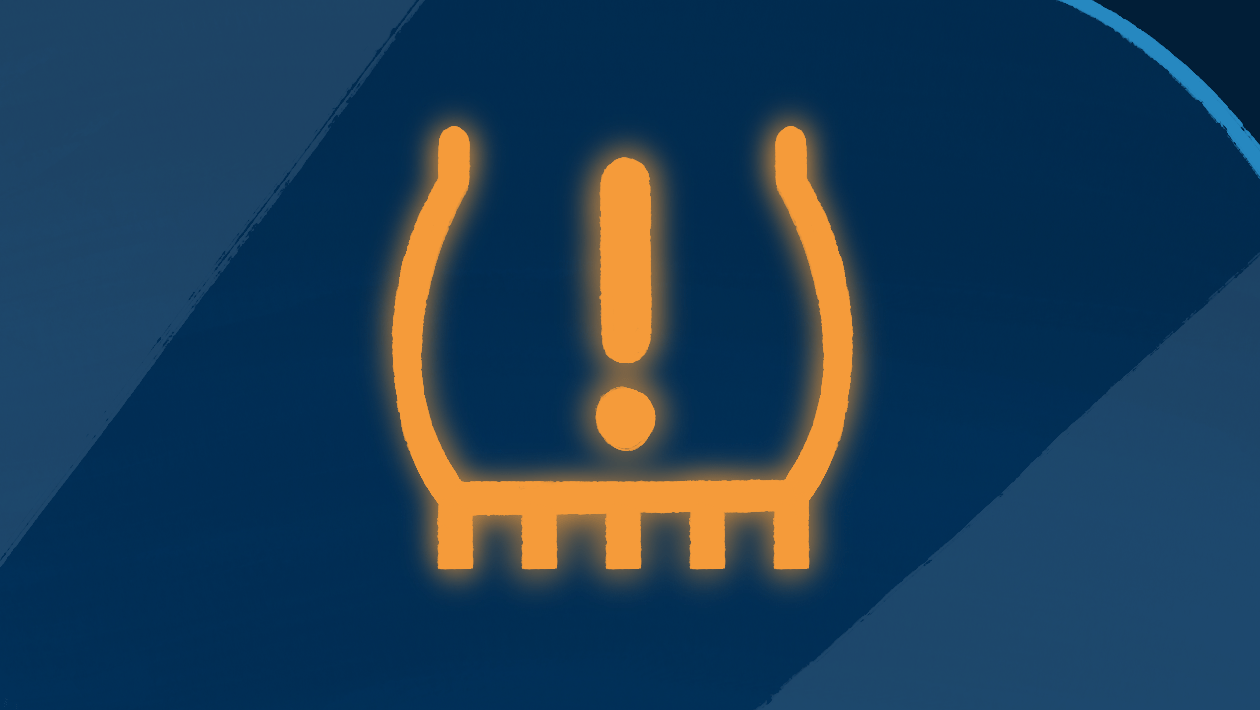
If the low tyre pressure warning light comes on, then your tyres could be underinflated or have experienced a drop in pressure.
The tyre pressure warning light is part of your vehicle’s tyre pressure monitoring system (TPMS).
An amber warning light will show on your dashboard if your tyres are low on air.
The low tyre pressure warning light looks like a horseshoe with an exclamation point in the middle.
A flashing tyre pressure light that comes on when you start your engine and stays on whilst driving most likely indicates a TPMS sensor fault.
If the light flashes intermittently, then a drop in temperature could be the cause.
You should have your vehicle checked if you notice a flashing light.
Exhaust Particulate Filter (EPF) Light

The exhaust particulate filter warning light is similar to the diesel particulate filter warning light.
Engine Temperature Light
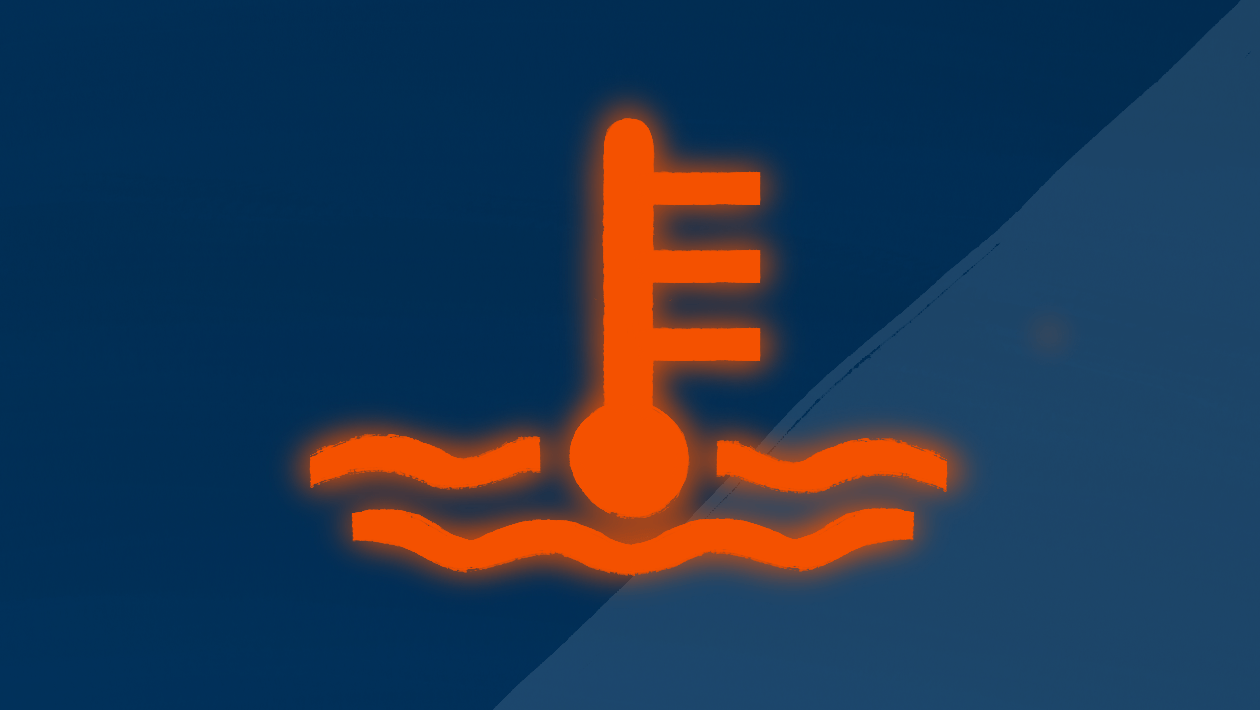
The engine temperature warning light looks like a thermometer sitting on two wavy lines.
Your coolant levels may be low if the engine temperature warning light comes on.
You should pull over and let the engine fully cool down before you check the coolant level in the tank under the bonnet.
Be extremely careful – steam rising from the engine could burn you.
If the coolant level is fine but light keeps coming back on, you could have a leaking radiator or a blown head gasket.
You must have your car looked at by a professional garage to determine the exact cause and fix the issue.
Coolant Level Light

The engine coolant warning light may come on if there is a loss of coolant or a sensor fault.
Your car could be at risk of overheating if this light has come on.
If your vehicle has a leak, this needs to be checked by a mechanic as soon as possible.
A flashing engine coolant light can indicate there is a cooling system fault, or that coolant isn’t circulating around the engine.
Brake Pad Light

The brake pad warning light looks like a circle surrounded by broken lines on either side.
Also known as the brake pad wear warning light, the brake pad warning light will come on if your brake pads are too thin.
You should have your brake pads replaced soon as excessive wear can make your vehicle unsafe to drive.
Electronic Stability Programme (ESP) Light
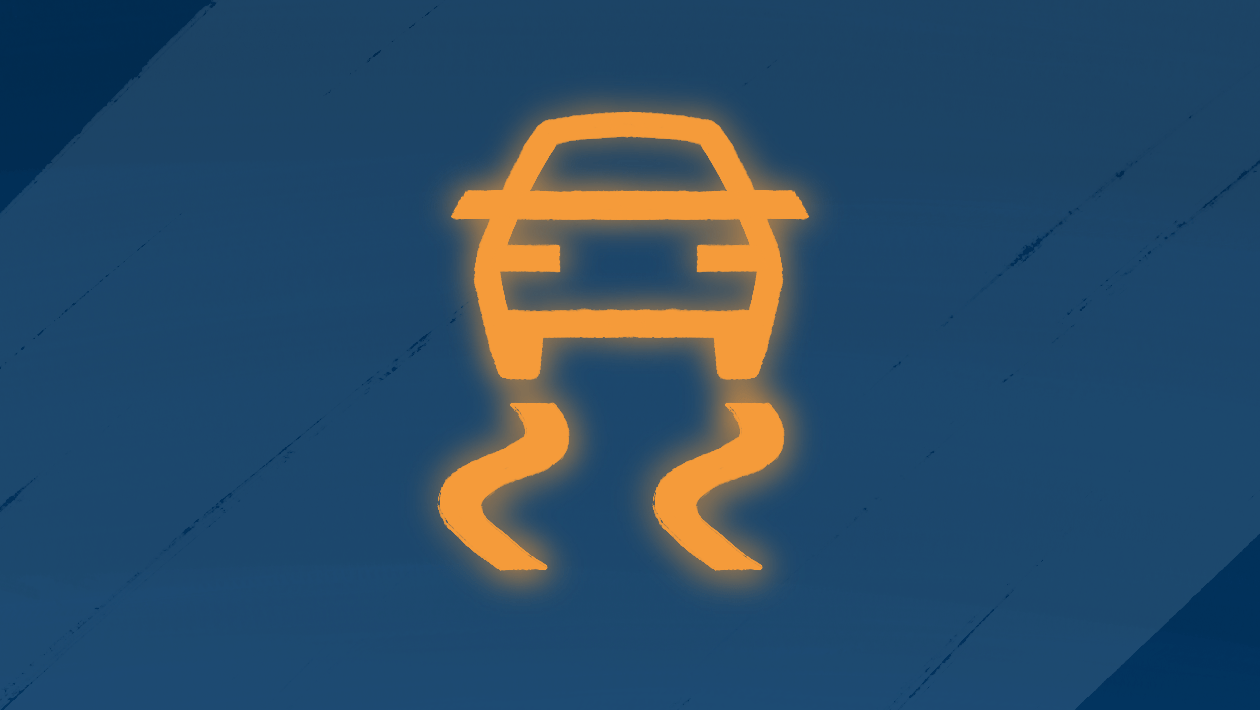
The electronic stability control (ESC) warning light looks like a car skidding on the road.
Also known as electronic stability control, the electronic stability problem warning light lets you know if there is a traction control issue.
A flashing ESP light signals that the ESP system is intervening.
If the light stays on, though, it means there is a problem with the ESP system.
The electronic stability programme light will show the word ‘OFF’ if the system has been deactivated – meaning you may have unintentionally turned it off.
You should stop and restart the engine to find out.
If the light stays on after restarting, you should have your car checked out at a professional garage soon.
Glow Plug Light

The glow plug warning light will appear for a moment when you start your diesel car.
It looks like a line with two loops.
If it stays on any longer than this, you should have a diagnostic check carried out at a garage in case the glow plugs are faulty.
Anti-lock Brake System (ABS) Light
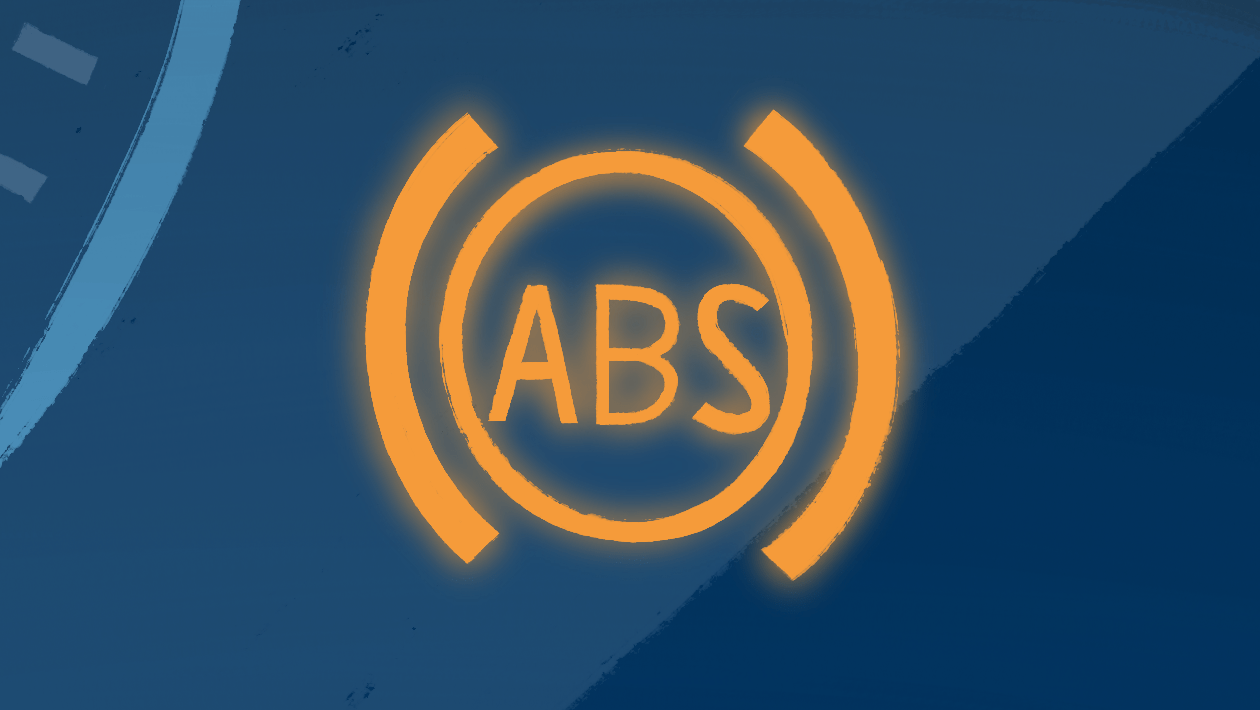
The anti-lock braking system light looks like a circle surrounded by two brackets, with ABS written in the centre.
Your vehicle’s ABS braking system is essential in helping your car stop in an emergency.
You should have your vehicle checked out if you can’t feel the brake pedal pulsing when you brake hard.
If the ABS warning light and brake warning light come on, then there could be a serious issue with your vehicle’s brakes.
Oil Pressure Light
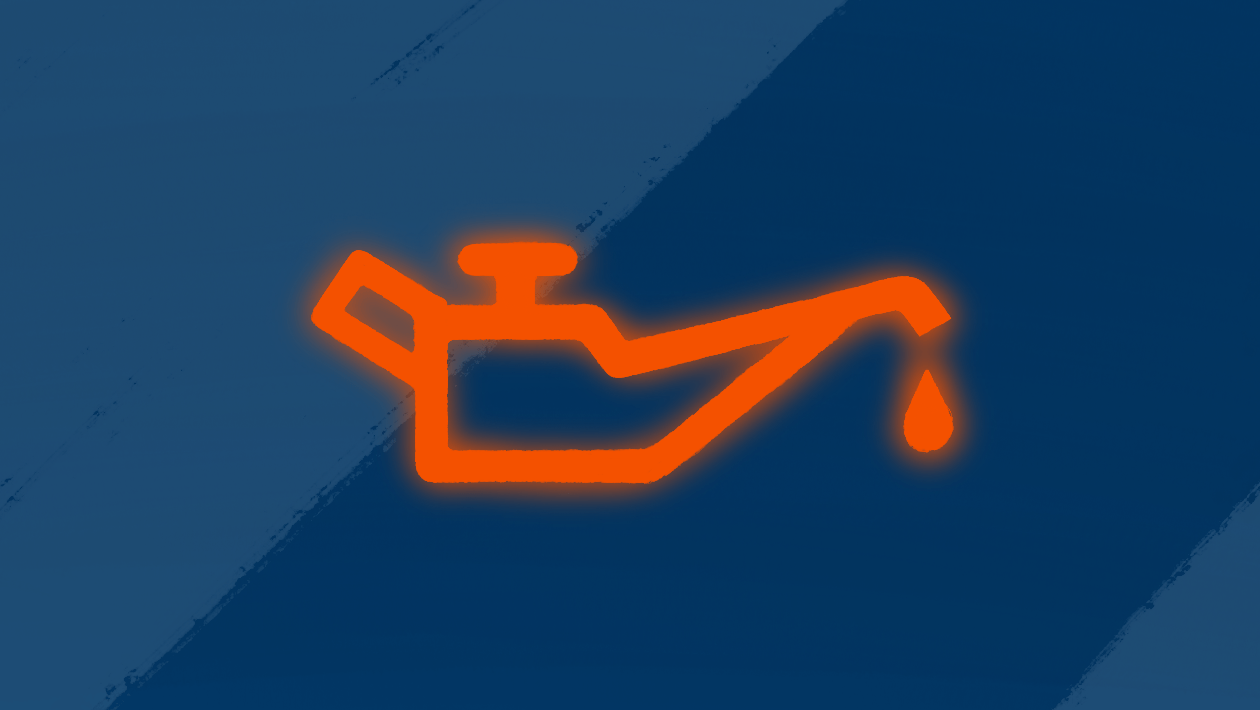
A low engine oil or low oil pressure light will come on if the oil temperature gets too high, there isn’t enough oil, or the oil pressure is too low.
The oil pressure light looks like an oil lamp with a drop of oil pouring from the spout.
A drop in oil pressure could be a sign that your oil is dirty or that a leak is present.
To check your engine oil levels, you should refer to your vehicle’s owner manual for more guidance.
You should have your vehicle looked at by a skilled technician if you notice this warning light – especially if you also hear a knocking sound from the engine or see steam or smoke coming from the bonnet.
Battery Light
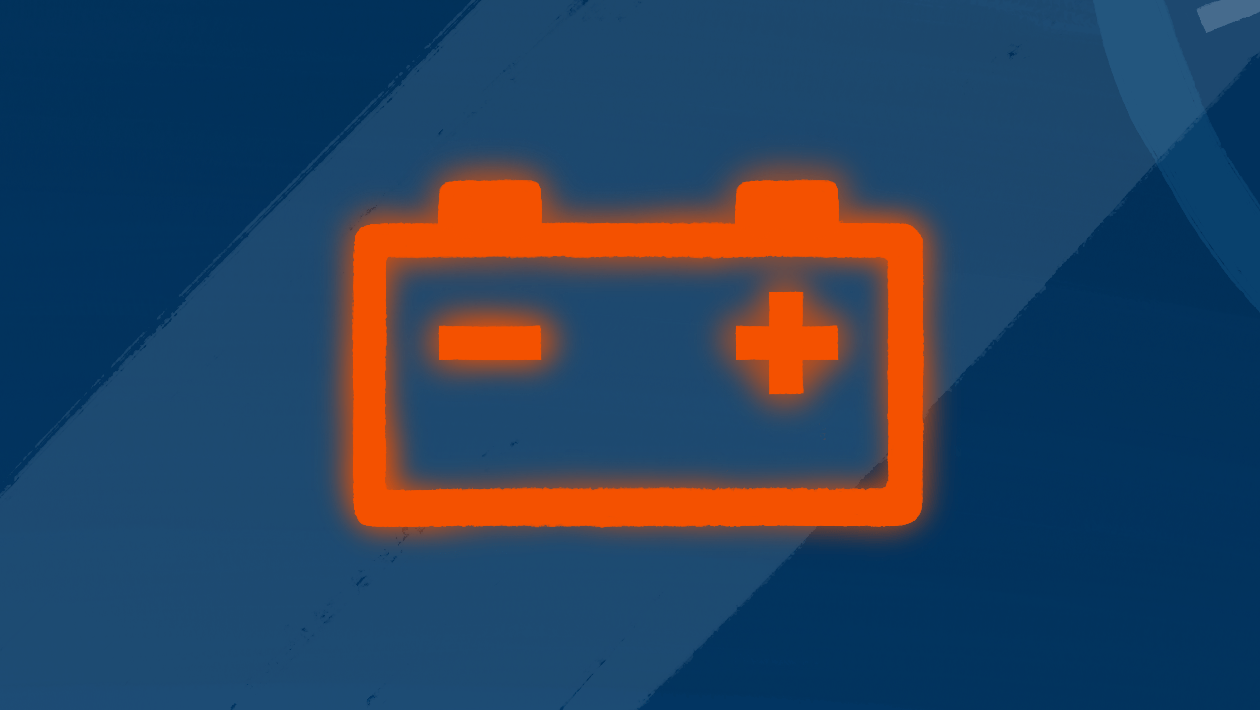
The battery light looks like a battery with a plus and minus sign on it.
The battery warning light should go off after a few seconds once you start the engine.
If it stays on, then there could be a fault with the battery, alternator or electrical system.
You should turn off anything you don’t need which uses the battery – e.g. the radio and air con – and keep driving until you reach a safe place to stop.
Stopping and turning off the engine right away means you may not be able to get the car to start again.
How Do I Reset Dashboard Warning Lights?
When it comes to resetting the warning lights on your dashboard, sometimes turning off your vehicle and restarting the engine can turn off and reset these lights for you.
If this does not reset the lights, then you will need to take your car to a professional garage so that they can reset the warning lights for you.
In some cases - as with the engine management light - diagnostic equipment may be required to locate the source of the issue, so you will need to book in with a skilled mechanic to have the issue resolved.
Understanding your dashboard warning lights is key to keeping your vehicle safe and running smoothly.
If you've noticed a warning light on your dash, don't ignore it for long.
Book a diagnostic check to address any issues before they become bigger problems.
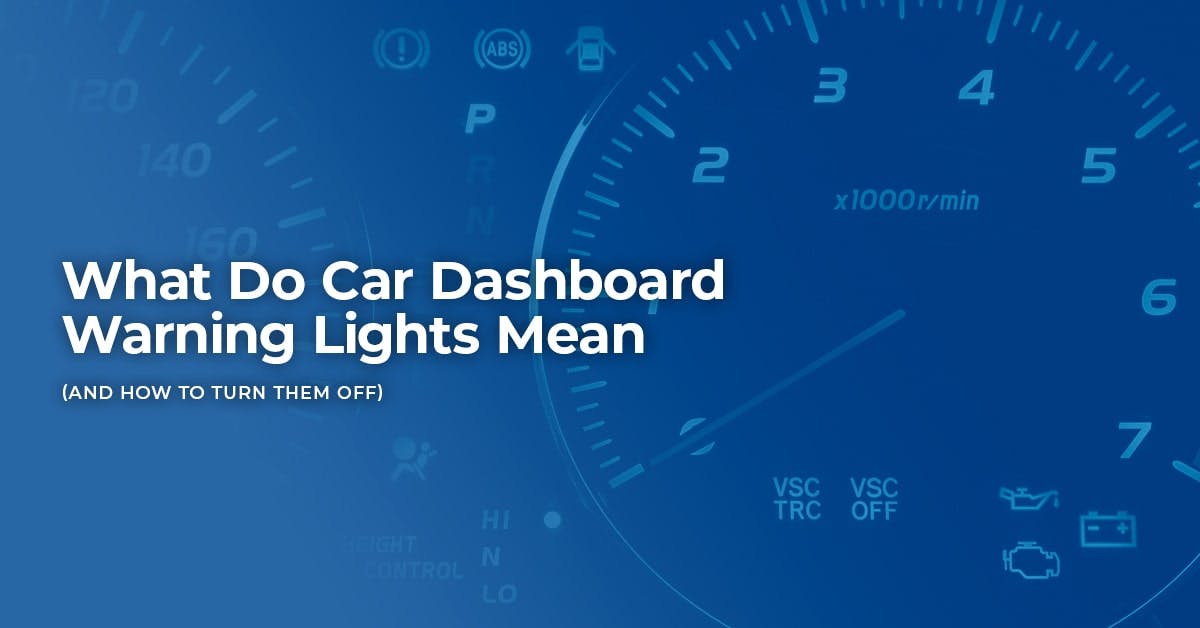







No comments yet
Leave a comment